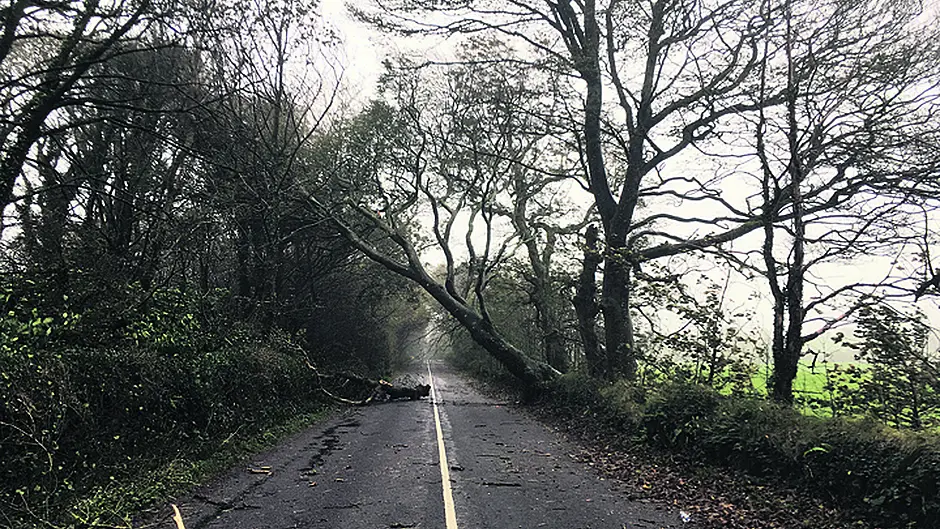STORM OPHELIA IN WEST CORK
NEARLY every route in West Cork was impassable for a period of time on Monday 16th.
Niall Twomey, the Civil Defence Officer for West Cork, confirmed that the biggest pressure facing the inter-agency team dealing with tropical storm Ophelia was the number of trees that fell as a result of the high winds.
‘No one was able to travel in any direction for a period of time,’ said Mr Twomey. ‘The N71 was closed and the R586 – which is the main Bandon to Drimoleague Road – was closed. And all access roads between the main towns in West Cork were closed, or impassable, for a period of two to three hours.
‘The road between Leap and Rosscarbery was the worst, as was the area between Carbery Milk Products and Manch Bridge on the R586.’
Mr Twomey said that each of the agencies involved – including Cork County Council, the Civil Defence, the Fire Brigade, the Garda, the ESB and the HSE – all had their own plans in place, but they acted in a co-ordinated way.
Aside from the number of fallen trees, Mr Twomey said: ‘The other danger was from debris – slates, trees and other items – being blown around, but the best way to deal with that was for everyone to stay indoors.’
Mr Twomey said: ‘The only other concern on Monday was the fear that there would have been flooding in the Skibbereen and Clonakilty areas due to the high tide and the surge caused by the storm.
‘But these areas didn’t flood due, to the fact that there was no heavy rainfall in the catchment area north of Skibbereen, in the Drimoleague and Castledonovan area.’
If heavy rainfall had been a feature of the tropical storm, Mr Twomey said, the area ‘certainly would have been in trouble with flooding’.
Mr Twomey gave The Southern Star an account of events on Monday saying: ‘There was no emergency crew out during the eye of the storm. But when the storm passed north of here, the Gardaí and local authority workers went out to find routes and diversions and to clear debris.’
He confirmed that the highest winds during the eye of the storm were recorded between 10am and 2pm and that the highest recorded wind was at Roches Point, which was clocked at 155km an hour.
Mr Twomey said the inter-agency team took a three-pronged approach – namely preparation, dealing with the situation on the ground, and the clean-up.
In terms of preparation, he said: ‘The local authority, as the lead agency, pre-positioned sandbags for residents and businesses in the Skibbereen area.
‘The gardaí prepared to put route diversions in place. And the Civil Defence crews prepared for flood response.
‘Our swift water responder teams would have had their equipment ready. And our flood pumping teams would have had all their equipment ready as well.
‘We also had four 4x4 vehicles available to assist the gardaí and the HSE in the West Cork area.’
As part of their preparatory work, Mr Twomey said that Cork County Council put in hardcore barriers on the riverbank opposite the West Cork Hotel in Skibbereen.’
Mr Twomey confirmed that most of Sunday was spent in preparation because ‘that level of preparation meant that we could be one step ahead during this severe weather event.
Cork County Council began Monday, the day of the storm, with a 5.30am meeting. It meant that the Council, as the lead agency, was well placed to deal with whatever happened.
Once the storm had passed, the local authority staff were still out working, clearing the roads of all forms of debris.
Mr Twomey confirmed that a number of private contractors – such as tree surgeons – were also engaged by the County Council because they are licensed to use chainsaws in the clearing of fallen trees.
The extra manpower meant that the main roadways were cleared quickly and efficiently.









